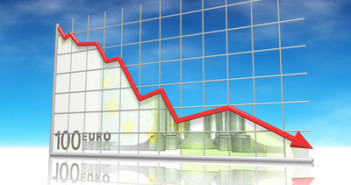5 German states have released inflation numbers. While many states are missing and the flash figure for all the country is scheduled for later, the picture is clear: price rises are weak in Europe’s largest economy.
This raises the prospects of ECB action, and weighs on the euro. — updates coming
Saxony and Hessen showed price falls of 0.5% in January, while the populous state of North Rhine Westphalia saw a drop of 0.7% and Bavaria, another populous state, saw a drop of 0.6%. Brandenburg stood out with a rise in prices.
Year over year, Germany’s inflation will be probably be lower than 1.5% expected and perhaps even lower than 1.4% seen in December. December’s HICP was only 1.2%
EUR/USD dropped to 1.36, and is currently holding on to this level. Further support awaits at 1.3550. For more, see the EURUSD forecast.
Weaker German inflation indicates weaker euro-zone inflation. The flash number for January will be published tomorrow by Eurostat. A negative deposit rate in March seems closer.



